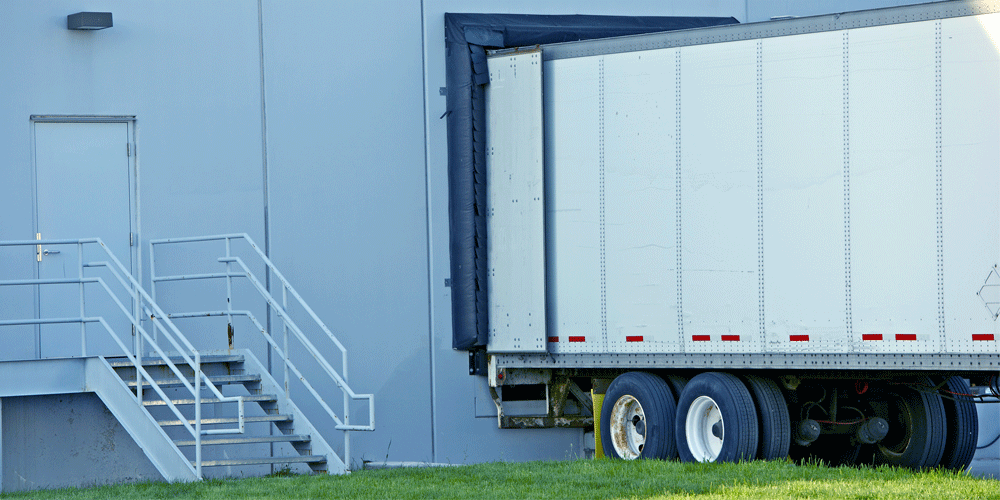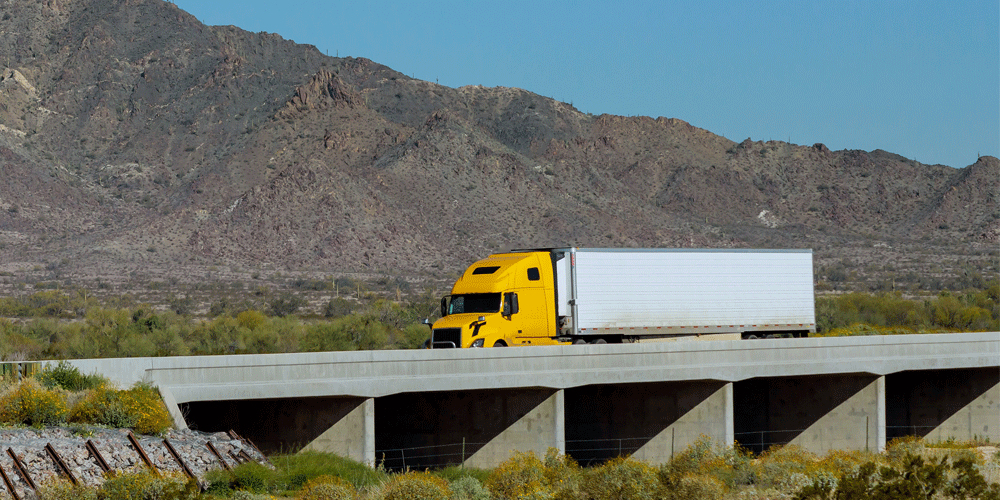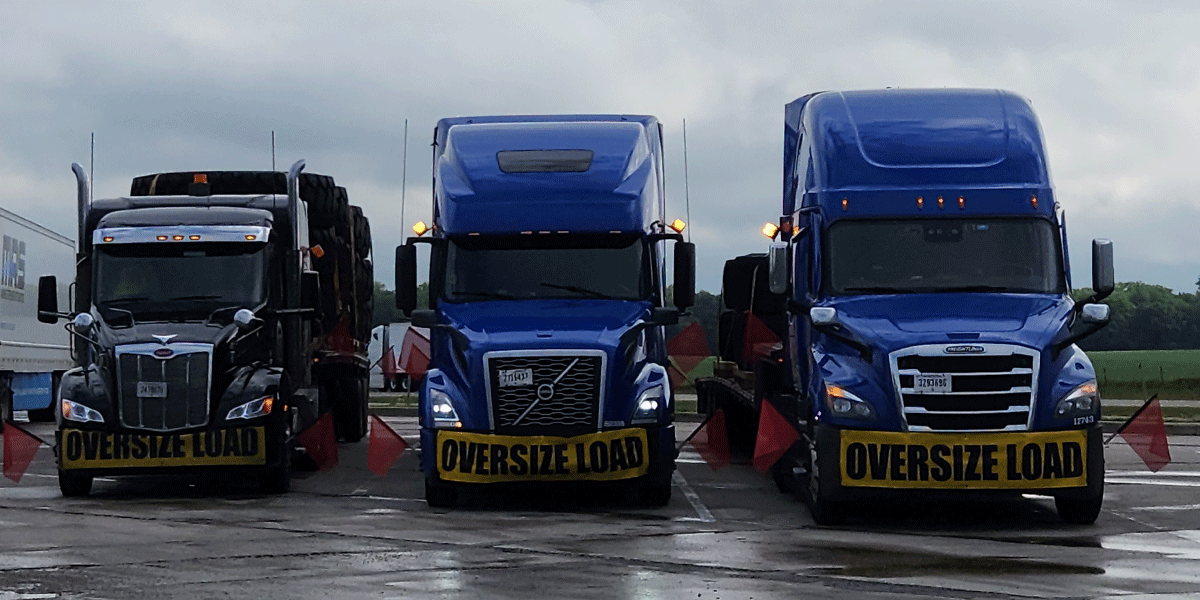Aaron has been with ATS since 2014. He began in fleet operations support. He worked with his own fleet of drivers while also dispatching wind turbine blade drivers. Aaron spent a couple years in the planning department working with both contractors and company drivers. He has been in the operations manager role since 2019. Tom is a southeast regional driver manager here at ATS. He enjoys the people at ATS and is excited about the growth opportunities. Before working at ATS, he was a dispatcher for more than 20 years at a reefer carrier.
Have you ever had the desire to transition from one truck driving division or trailer type to another?
Maybe you’re ready to advance your trucking skills and you want to switch from hauling dry vans to flatbeds. Maybe you’ve only moved flatbeds but you don’t want to tarp and secure freight anymore, so you’re ready to move into the dry van division. You may even like the stability hauling refrigerated goods provides, so you want to start hauling a refrigerated (reefer) trailer.
Regardless of which division you want to switch to and why, you need to consider some things. Switching trailer types can be a great move, but it’s not always an easy transition. You’re switching the type of job entirely and you have to learn a whole new set of rules.
Here at Anderson Trucking Service (ATS), we have both a dry van and flatbed division, but we also employ a slew of experts with experience hauling reefer trailers.
This article will not only provide the realities of hauling reefers, dry vans and flatbed trailers, but it’ll help you determine if a switch is the right move for you.
Hauling Reefer Trailers: What to Expect
There are a lot of things to get used to if you’ve never hauled refrigerated trailers before. Your primary concerns will be making sure the reefer stays at the proper temperature and ensuring you meet delivery times. You’ll be using extra fuel, too, because the reefer is always running. You even have to stay with the trailer to make sure it’s maintaining the proper temperature.
Some customers want the reefer unit to stay at a specific temperature, which is listed on the Bill of Lading (BOL). They can go into your computer system to check and ensure the temperature was where it needed to be.
There are telltale signs that your reefer isn’t working properly, and you need to know them. If something goes wrong with your reefer trailer, all the food can spoil. If something goes wrong with your semi-truck, you need to get it fixed as soon as possible to meet your delivery time.
With reefer trailers, you’re primarily hauling food, but sometimes you could be hauling other products. You have to follow specific regulations depending on the type of freight you’re hauling. For instance, you have to pay attention to different food grades.
When you’re hauling a reefer trailer, you’re usually hauling food products that need to be delivered at a specific time — whether that’s because the product has a sell-by date, will spoil quickly or needs to be used to make something. If you fail to meet a delivery window or appointment slot, it can be a major problem. The customer may no longer want the product if it arrives late.
Either the truck needs to get up and running as soon as possible or a new driver and truck has to be deployed to haul the reefer.
You can be subject to claims if you miss a delivery window. If you miss a delivery because you were late or broken down, the product can be routed back to the shipper and frozen for later use and sale (as long as the product isn’t expired).
Transporting the product back to the shipper and refreezing it is costly. The customer may have to reprocess the product and find different buyers, as well. While every carrier has protocols for handling claims, if you’re an independent contractor, you may have to deal with that claim yourself.
Some customers may require trailer washouts between different food products. If you end up using the reefer trailer to haul dry goods, the trailer has to be dry. It can’t be cold and wet.
Oftentimes, reefer trailers are sealed between drops if you’re going to multiple food warehouses. The trailer needs to be sealed prior to delivery, then it needs to be padlocked and sealed after every delivery.
The amount of drop-and-hook loads you have is dependent upon your carrier. Loading and unloading can take longer with reefer freight — often because whoever is loading or unloading the product is also counting it.
In some cases, you could be the one unloading the freight (called touch freight).

Things You Need to Get Used To
If you’re going to start moving reefer trailers from any other division, here’s what you need to get used to:
- Maintaining the proper trailer temperature to meet requirements and customer needs
- Maintaining food grade standards
- Being vulnerable to claims
- Meeting strict appointment times
- Unloading the freight (potentially)
- Consuming excess fuel
- Listening to the loud sounds of the reefer
Hauling Dry Van Trailers: What to Expect
When you’re hauling dry van trailers, there are a few things you may need to get used to if you’ve never done it before.
For starters, van trailers can usually hold a little more weight than reefer trailers because dry van trailers aren’t as heavy as reefer trailers. There’s often more room in a dry van trailer compared to a reefer trailer, which may have a produce shoot along the top — making freight height restrictive. Dry van drivers, therefore, usually have higher capacity hauling abilities.
We commonly think of dry van trailers as 53-foot trailers, but there are also 48-foot dry van trailers, pup trailers and straight trailers.
Pup trailers are shorter trailers that can be attached to another trailer in doubles or triples. They’re usually between 26 and 32 feet long. These are commonly used when drivers have to make cargo drops in different locations or the cargo needs to be separate from other freight. A pup is also used when drivers need to navigate small city streets or neighborhoods.
Straight trucks are commonly used in local deliveries. The cab and trailer are connected. You only need a CDL-B to haul straight trucks whereas you need a CDL-A to haul other dry vans (and a doubles and triples endorsement if you’re hauling multiple pups together).
Unless you’re also unloading the product, hauling a dry van requires less physically demanding work than hauling a flatbed trailer. If you have to unload the product, you may have to unload it box by box or using a pallet jack; this can be both physically demanding and time-consuming. There is some securement involved, but when compared to the flatbed division, it isn’t much. You may have to sweep your trailer to keep it clean.
You may do a lot of drop-and-hook freight or you’ll have to back into a dock. Either way, you have to be precise with your backing to ensure you don’t high-hook the trailer or run into anything. You’ll also need to pay close attention to make sure your trailer is sealed and that the seal matches the number on the BOL.
If you aren’t picking up a fully loaded trailer, you can spend a lot of time at warehouses waiting to be loaded and unloaded. However, because you don’t have to secure or tarp your freight, you can get on the road right away. That could mean you’re driving a lot more miles than drivers hauling flatbed loads.
Oftentimes, dry van freight pays the least when compared to flatbed freight and reefer freight.
Things You Need to Get Used To
If you’re going to start moving dry van trailers from any other division, here’s what you need to get used to:
- Getting little physical exercise on the job
- Backing up into a dock
- Dropping off dry van trailers and hooking up to a new one
- Sweeping the trailer
- Unloading touch freight (potentially)
- Earning less money than other divisions

Hauling Flatbed Trailers: What to Expect
Among the types of trailers you can haul, hauling flatbed trailers is the most physical job — which can be quite the change for you if you’ve come from hauling dry vans or reefer trailers.
Because you’re hauling an open-deck trailer, you have to secure your loads and sometimes you also have to tarp them to protect the freight from the elements. Freight has to be secured according to Department of Transportation (DOT) requirements. If you secure freight incorrectly, the results could be disastrous.
Securing and tarping freight is intense physical labor and it can take hours — especially if you’re new to it. Chains and tarps are heavy and lifting and throwing them can be hard on your body. Flatbed drivers have to do this regardless of the elements; you’ll be securing freight in the heat and the cold. The DOT also requires you to stop regularly at designated mile intervals to check your securements to ensure they’re holding steady.
It may take you a long time to get loaded and unloaded depending on the type of freight you’re hauling. For instance, a crane may be needed to place the freight on the trailer. In other cases, you’ll have to load the freight yourself by driving the equipment onto the trailer.
Because of this extra work, however, drivers hauling flatbed loads often earn more money than other drivers do.
If you’re working with a company that hauls specialized freight — such as ATS — you might be hauling different types of freight on different types of trailers every day. This can be challenging, though many drivers love this aspect of the job.
When you’re hauling specialized, oversized freight, you may need to get permits to drive specific routes. There are roads you can and can’t drive on and you might be subject to different hours of operation. For instance, you might only be able to drive during daytime hours.
Related: Is flatbedding right for you?
Things You Need to Get Used To
If you’re going to start moving flatbed trailers, here’s what you need to get used to:
- Securing and tarping loads in the elements
- Tiring physical labor that can be hard on your body
- Securing different types of freight each week
- Stopping to check your loads
- Following hours of operation restrictions
- Following specific routes
- Obtaining and following permits
Making Your Decision
Switching trailer types or divisions in the trucking industry is a decision that requires careful consideration and understanding of the realities associated with each type of trailer. Whether you’re transitioning from hauling dry vans to flatbeds, from flatbeds to reefers, or vice versa, it’s important to recognize that each division comes with its own unique set of challenges and requirements.
When it comes to hauling refrigerated trailers or reefers, drivers must be diligent in maintaining the proper temperature to ensure the quality and safety of the goods being transported. Meeting delivery times and adhering to specific customer requirements regarding temperature control are crucial aspects of the job.
Additionally, there are specific regulations related to different types of freight, such as food grade standards, which drivers need to follow diligently. The hauling of perishable goods also puts drivers at a higher risk of claims and requires strict adherence to appointment times.
On the other hand, hauling dry van trailers offers its own set of considerations. Drivers in this division may have higher capacity hauling abilities and usually experience less physical labor compared to flatbed drivers. However, they need to be meticulous in backing up into docks. While the physical workload may be reduced, drivers must be prepared for the challenges of maneuvering large trailers and paying attention to clearance.
Hauling flatbed trailers presents the most physically demanding job in terms of securing and tarping loads. Flatbed drivers are responsible for properly securing freight according to DOT requirements, and this task can be labor-intensive and time-consuming. It’s essential to check securements regularly to ensure the safety of the load. Flatbed drivers often handle specialized and oversized freight, which may require permits, specific routes and adherence to unique hours of operation restrictions.

Explore an Opportunity in the Flatbed Division
Switching trailer types or divisions requires a thorough understanding of the job requirements, physical demands and regulations associated with each type of trailer. It’s crucial to evaluate personal preferences, capabilities and long-term goals before making a decision. Seeking guidance from experienced professionals and utilizing resources within the industry can help you assess if a switch is the right move for you.
At ATS, we provide expertise in various trailer types, including dry van and flatbed divisions. Our goal is to support drivers in making informed decisions and ensuring a smooth transition between divisions. By understanding the realities and challenges associated with each trailer type, drivers can better prepare themselves for a successful and fulfilling role in the trucking industry.
Learn more about our flatbed lease program to decide if it’s right for you.

